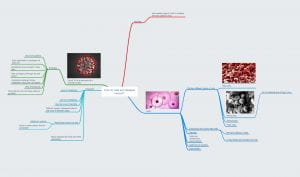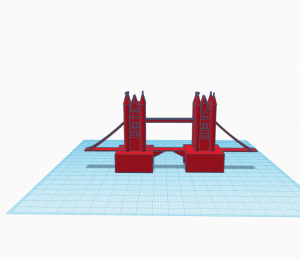678yt“Comic cells” was the name of my last ever grade 8 PLP project. This project was all about the driving question “How do cells and diseases interact”. For this project we had to create and research a comic book about cells. The comic book had to be about cells and diseases or be about a cellular process.
My end mind map below shows some of the things that I have learned about cells and diseases.

Milestone 3 where I learned more about diseases.

Curricular competencies.

I demonstrated the competency of “Questioning and Predicting”. First of all I read the materials and watched the video that was needed to complete milestone 3. I also participated and loved the experiment that Mr. Gross set up in class with the beakers and learning how to track who had the virus. This sustained my curiosity about cells and diseases and I tracked who had had the virus on my iPad as well as following with the class on the board. Lastly, I demonstrated this competency by using my class time efficiently and then coming in to flex block to make sure I got it done well.
I read the materials and watched the video that was needed to complete milestone 3. I also participated and loved the experiment that Mr. Gross set up in class with the beakers and learning how to track who had the virus. This sustained my curiosity about cells and diseases and I tracked who had had the virus on my iPad as well as following with the class on the board. Lastly, I demonstrated this competency by using my class time efficiently and then coming in to flex block to make sure I got it done well.
I demonstrated the “Scientific Communication” competency. Firstly, I used more than 10 scientific words in my comic book and I also used them in a way that showed I understood them. I also showed that I met this competency by  using diagrams to show the inside of an animal cell. Lastly, I showed this competency by using different apps to represent the science I am learning. Apps like Comic Life 3, where I put together all the panels of my comic to make the finished product. I also used Sketches Pro to draw and create the images included in my comic book. These technologies help me present the problems and solutions of this scientific topic of Cells and how they are affected by disease.
using diagrams to show the inside of an animal cell. Lastly, I showed this competency by using different apps to represent the science I am learning. Apps like Comic Life 3, where I put together all the panels of my comic to make the finished product. I also used Sketches Pro to draw and create the images included in my comic book. These technologies help me present the problems and solutions of this scientific topic of Cells and how they are affected by disease.
I showed the “Evaluating” competency in my comic. First of all when I chose the Variola/Small pox virus to be the main topic of my comic book. The setting of the lab and how I showed the virus being transmitted easily on a bus  showed how I researched and then applied how it could be spread. I was specific when I said it would at least 7 days until the person saw visible signs of infection. Also when I showed that it would cause a world-wide pandemic, it showed I knew the material and could apply it to my comic book. I evaluated the research and then put it together in a very interesting and scientific story. The cells and the virus acted in a scientific way by how the virus replicated and by how the cells would react.
showed how I researched and then applied how it could be spread. I was specific when I said it would at least 7 days until the person saw visible signs of infection. Also when I showed that it would cause a world-wide pandemic, it showed I knew the material and could apply it to my comic book. I evaluated the research and then put it together in a very interesting and scientific story. The cells and the virus acted in a scientific way by how the virus replicated and by how the cells would react.
To answer the driving question “How do cells and diseases interact”, my comic book shows how the cells, diseases, and people would react to the smallpox diseases. It explains how the immune cells rush to the inflamed area to attack pathogens, how a vaccine would help the cells, and a few more ways they interact. See my comic book below.

I really enjoyed making this comic book. I didn’t think I would enjoy creating this story but I was a lot of fun. I didn’t really enjoy drawing all the scenes but with the help of an app called Sketches Pro it was a bit better. Overall this was a very interesting and enjoyable way to learn about cells and diseases as well as a good way to show what we had learned.






